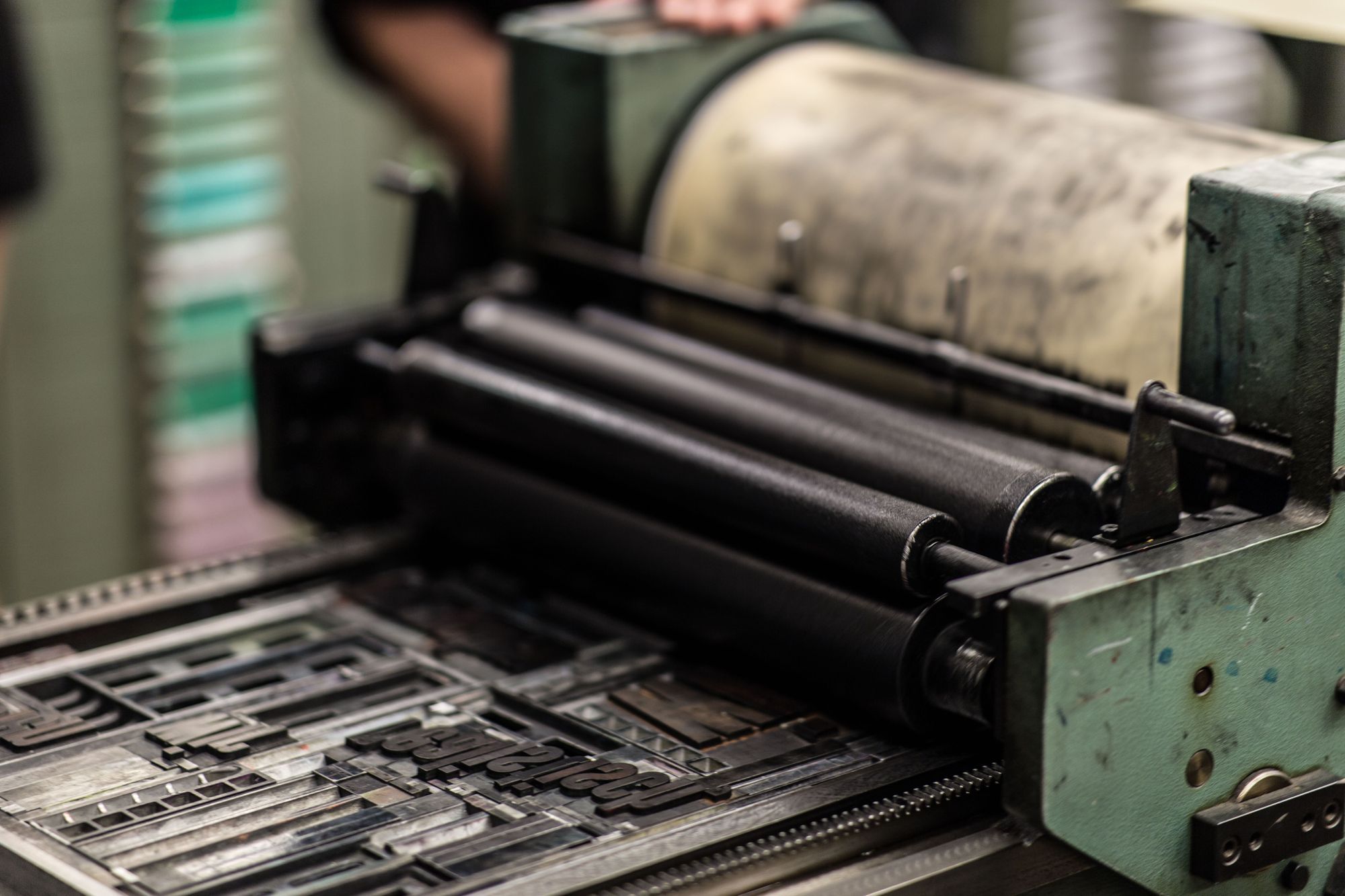How to print out information is one of the first things you learn as a beginner programmer.
This article goes over what you need to know about printing in Python, and we'll look at plenty of code examples along the way.
Let's get started!
What is print used for?
Printing is most likely the first thing you'll learn when you embark on your Python learning journey.
It is somewhat of a tradition to write a "Hello World" program as your first lines of code. And you do that by using the print() function to output that piece of text to the console.
Printing is mostly used for displaying information to the console, whether it's showing a certain message or computational result. But it's also used for debugging purposes.
Printing in Python 2 vs printing in Python 3
In order to print something to the console in Python 2, all you had to do was use the print keyword:
print "Hello world"
#output
#Hello world
This was called a print statement.
In Python 3 the print statement was replaced by the print() function.
print("Hello world")
#output
#Hello world
If you don't add the set of opening and closing parentheses that follow print in Python 3, you'll get an error when you run the code:
print "Hello world"
#output
#File "/Users/dionysialemonaki/python_articles/demo.py", line 1
# print "Hello world"
# ^^^^^^^^^^^^^^^^^^^
#SyntaxError: Missing parentheses in call to 'print'. Did you mean #print(...)?
So in Python 2, the print keyword was a statement, whereas in Python 3 print is a function.
print() Syntax in Python
The full syntax of the print() function, along with the default values of the parameters it takes, are shown below.
This is what print() looks like underneath the hood:
print(*object,sep=' ',end='\n',file=sys.stdout,flush= False)
Let's break it down:
*objectcan be none, one, or many data values to be printed, and it can be of any data type. Objects get converted to a string before printing.sepis an optional parameter that specifies how more than one object are separated. The default is' '– a space.endis an optional paramater that specifies with what the line will end. By default the print call ends with a newline, with\nbeing the newline character.fileis an optional paramater which is an object with a write method – it can write and append (add) the output to a file. The default issys.stdout(or system standard output) and the output is displayed on the screen.flushis a boolean parameter that specifies whether the stream will be forcibly flushed or buffered. Flushed means whether the print call will immediately take affect. The default value is False (or buffered).
The print() function has no return value.
How to Print Objects in Python
Even if you don't pass in any arguments to print() – that is you don't pass any object/s to be printed – you still need to include a set of empty parentheses.
This will just output a blank line to the console in such a case.
This is best illustrated when using the Python REPL (Read Eval Print Loop).
To start a new session, after installing Python on your machine type python3. When you're done, type exit() to end the session.
>>> print()
>>>
It's similar to hitting they Enter key on your keyboard when writing in a word processor. Just like the Enter key creates a new line and moves the cursor to a new line, in the same way calling print() with no arguments displays an empty line.
How to Print Strings in Python
You print strings by passing the string literal as an argument to print(), enclosed in either single or double quotation marks.
The output will be the string literal, without the quotes.
print("I am learning Python")
#output
#I am learning Python
If you have a set string or phrase you want to print, you can store it in a variable and pass the variable name as the argument to print().
greeting = "Hey there!"
print(greeting)
#output
#Hey there!
It's a best practice to give meaningful names to variables, according to the content stored inside them. This will make code more readable for yourself and anyone else you're working with.
As shown in the print() syntax earlier, there can be more than one object passed as arguments (*object).
You can do this by separating each argument with a comma.
print("Hello","there!")
#output
#Hello there!
There are two arguments: "Hello" and "there!".
In the examples below, the arguments are a string literal and a variable.
full_name = "John Doe"
print("Hey",full_name)
#output
#Hey John Doe
You can also do this using concatenation with the addition operator:
full_name = "John Doe"
print("Hey " + full_name)
#output
#Hey John Doe
With concatenation, you have to account for the spaces otherwise you'll end end up with the following:
full_name = "John Doe"
print("Hey" + full_name)
#output
#HeyJohn Doe
Keep in mind that you cannot add a string literal with a number.
This would result in an error:
print("Hey" + 7)
#output
#Traceback (most recent call last):
# File "/Users/dionysialemonaki/python_articles/demo.py", line 1, in #<module>
# print("Hey" + 7)
#TypeError: can only concatenate str (not "int") to str
As the error suggests, you can only concatenate (add) a string to a string. This means that if you want to include a number, you'd have to convert it to its string equivalent by typecasting.
#use the str() method to convert an integer to a string
print("Hey" + str(7))
#output
#Hey 7
A modern way to print objects is by using f-strings.
full_name = "John Doe"
print(f"Hey there {full_name}")
#output
#Hey there John Doe
Strings are not the only objects that can be passed as arguments.
In fact, print() accepts all kinds of data types which you'll see in the section that follows.
Examples of how to print the rest of Python's built-in data types
#how to print ints
print(7) #output is 7
#how to print floats
print(7.0) #output is 7.0
#how to print complex
print(1j) #output is 1j
#how to print a list
print([10,20,30]) #output is [10,20,30]
#how to print a tuple
print((10,20,30)) #output is (10,20,30)
#how to print a dictionary
print({"language": "Python", "field": "data science"})
#output is {"language": "Python", "field": "data science"
#how to print a set
print({"autumn","winter","spring","summer"})
#output is {"autumn","winter","spring","summer"}
#how to print a bool
print(True) #output is True
print(False) #output is False
How to Change the Way Objects Are Separated in the print() Function
As you've seen in the syntax for the print() function, sep determines how one object is separated from the next.
By default objects are separated by a single space.
print("Hello","World")
#output
#Hello World
To disable that, you explicitly change the value of sep to the character you want.
For example, objects can be separated by dashes:
print("Hello","World", sep="---")
#output
#Hello---World
Or you could even remove the space by adding an empty string instead:
print("Hello","World", sep="")
#output
#HelloWorld
How to Remove the Default Newline in print()
As you saw ealier in the syntax breakdown of the print() function, the default parameter for the keyword argument end was '\n'.
By default, after each print call, a new line is created.
If you call print two times separately, one after the other, you'll see that the second call is displayed on a newline immediately after the first call.
print("Hello")
print("World")
#output
#Hello
#World
To disable that, you can explicitly change the value of end to an empty string, "".
print("Hello ", end="")
print("World")
#output
#Hello World
Now both are on the same line.
You can even change it to a full stop:
print("Hello", end=".")
print("World")
#output
#Hello.World
Anything that isn't the default value will supress the newline that gets created.
How to Direct the print() Output to a File in Python
You'll mostly want to print the output to the standard output, or the command line standard output.
There may be times, however, when you'll want to direct that output to an existing file.
Say you have a text file and want to add some text using the print() function.
To open and write to a file in Python, you call the open() function. Inside it you include the name of the file, output.txt in this case, and the -w mode, meaning for writing only.
With this mode, each time you run your code the contents of the file will be deleted and replaced by any new text you add.
If you don't want to lose any content, you could use the -a mode instead, for appending text to the end of the file.
Inside the print() function you add any text you want to add to the file and set the file parameter equal to the placeholder name you created for the file you want to add the text to, in this case f.
with open('output.txt', 'w') as f:
print('Hello World!', file=f)
Conclusion
Thanks for reading and making it to the end! I hope you found this tutorial helpful. You now know the basics of how to use the print() function in Python.
If you are interested in learning more about the Python programming language, check out freeCodeCamp's Python certification to get you started.
It covers all the fundamental programming concepts and gradually progresses to more advanced topics. In the end, you'll also build five projects to solidify your learning.
Happy coding!

